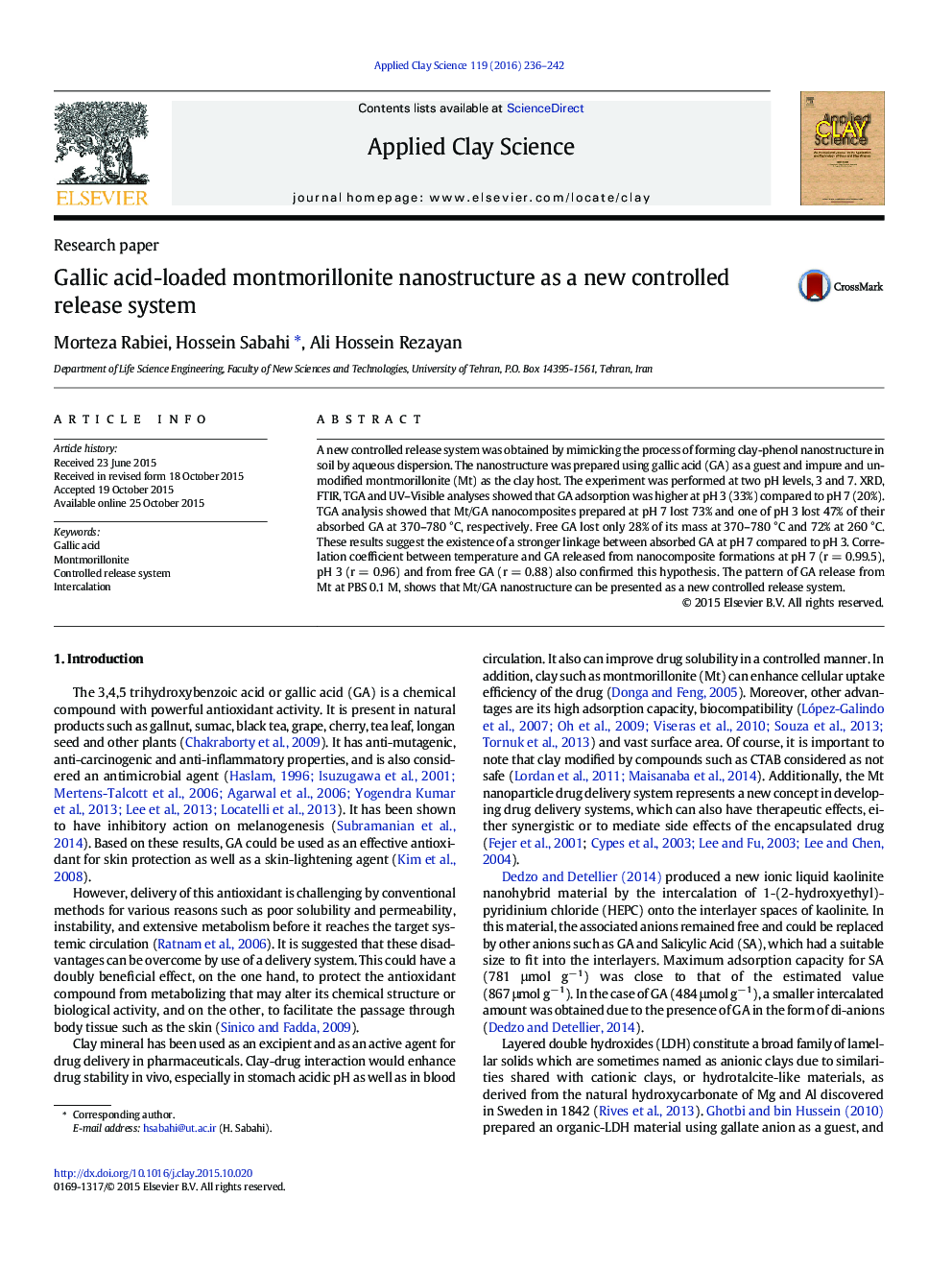| Article ID | Journal | Published Year | Pages | File Type |
|---|---|---|---|---|
| 1694215 | Applied Clay Science | 2016 | 7 Pages |
•FTIR, TGA and UV-Visible analyses showed that GA adsorption was higher at pH 3 (33%) compared to pH 7 (20%).•TGA analysis showed that Mt/GA produced at pH 7 and 3 lost 73% and 47% of their absorbed GA at 370-780 °C, respectively.•These results suggested the existence stronger linkage between intercalated GA at pH 7 compared to pH 3.•Correlation coefficient between temperature and GA released from nanocomposites also confirmed this hypothesis.•The pattern of GA release from Mt, shows that Mt/GA nanostructure can be presented as a new controlled release system.
A new controlled release system was obtained by mimicking the process of forming clay-phenol nanostructure in soil by aqueous dispersion. The nanostructure was prepared using gallic acid (GA) as a guest and impure and unmodified montmorillonite (Mt) as the clay host. The experiment was performed at two pH levels, 3 and 7. XRD, FTIR, TGA and UV–Visible analyses showed that GA adsorption was higher at pH 3 (33%) compared to pH 7 (20%). TGA analysis showed that Mt/GA nanocomposites prepared at pH 7 lost 73% and one of pH 3 lost 47% of their absorbed GA at 370–780 °C, respectively. Free GA lost only 28% of its mass at 370–780 °C and 72% at 260 °C. These results suggest the existence of a stronger linkage between absorbed GA at pH 7 compared to pH 3. Correlation coefficient between temperature and GA released from nanocomposite formations at pH 7 (r = 0.99.5), pH 3 (r = 0.96) and from free GA (r = 0.88) also confirmed this hypothesis. The pattern of GA release from Mt at PBS 0.1 M, shows that Mt/GA nanostructure can be presented as a new controlled release system.
Graphical abstractFigure optionsDownload full-size imageDownload as PowerPoint slide
